Arms & Badges - Arms of some of Canada's Prime Ministers
The Prime Minister is the head of government in Canada. The Canadian prime minister is usually the leader of the political party that wins a majority of the seats in the House of Commons in a general election. Although the role of prime minister in Canada is not defined by any law or constitutional document, it is the most powerful role in Canadian politics.
that wins a majority of the seats in the House of Commons in a general election. Although the role of prime minister in Canada is not defined by any law or constitutional document, it is the most powerful role in Canadian politics.
Apparently, the prime minister does not have a flag that uniquely distinguishes the office minister holds. On occasions when a distinguishing flag is required, such as when the prime minister is travelling by car, boat, or aircraft, the prime minister uses a miniature National Flag.
Click on the arms displayed below to view a larger image of the same or arms with blazon if available.
Rt. Hon. Justin Trudeau, Term: Nov 2015 - 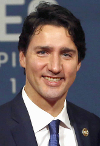 PC MP (born December 25, 1971) is the twenty-third and current Prime Minister of Canada, and leader of the Liberal Party. The second youngest Prime Minister after Joe Clark, he is also, as the eldest son of former Prime Minister Pierre Trudeau, the first to be related to a previous holder of the post. PC MP (born December 25, 1971) is the twenty-third and current Prime Minister of Canada, and leader of the Liberal Party. The second youngest Prime Minister after Joe Clark, he is also, as the eldest son of former Prime Minister Pierre Trudeau, the first to be related to a previous holder of the post.Born in Ottawa, Trudeau attended Collège Jean-de-Brébeuf and graduated from McGill University in 1994 and the University of British Columbia in 1998. He gained a high public profile in October 2000, when he delivered a eulogy at his father's state funeral.[5] After graduating, he worked as a teacher in Vancouver, British Columbia. He completed one year of an engineering program at Montreal's École Polytechnique before quitting in 2003. In 2005 he began a master's degree in environmental geography at McGill University but quit after one year. He used his public profile to advocate for various causes and acted in the 2007 TV miniseries The Great War. |
|
Rt. Hon. Stephen Harper, Term: Feb 2006 - Nov 2015 PC MP (born April 30, 1959) was the twenty-second Prime Minister of Canada, and leader of the Conservative Party. Harper became Prime Minister after his party won a minority government in the January 2006 federal election. He is the first Prime Minister from the newly amalgamated Conservative Party, following twelve years of government by the Liberal Party. Harper is the first Canadian prime minister born in the second half of the twentieth century. Harper is the first Canadian prime minister to prorogue Parliament in order to avoid a vote of confidence in the House. PC MP (born April 30, 1959) was the twenty-second Prime Minister of Canada, and leader of the Conservative Party. Harper became Prime Minister after his party won a minority government in the January 2006 federal election. He is the first Prime Minister from the newly amalgamated Conservative Party, following twelve years of government by the Liberal Party. Harper is the first Canadian prime minister born in the second half of the twentieth century. Harper is the first Canadian prime minister to prorogue Parliament in order to avoid a vote of confidence in the House.Harper has been the Member of Parliament (MP) for the riding of Calgary Southwest in Alberta since 2002. Earlier, from 1993 to 1997, he was the MP for Calgary West. He was one of the founding members of the Reform Party, but ended his first stint as an MP to join, and shortly thereafter head, the National Citizens Coalition. Harper has not pursue armorial bearings. |
|
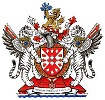 |
Rt. Hon. Paul Martin, Term: Dec 2003 - Feb 2006 Paul Martin, born August 28, 1938, was the twenty-first Prime Minister of Canada, as well as leader of the Liberal Party of Canada. Paul Martin, born August 28, 1938, was the twenty-first Prime Minister of Canada, as well as leader of the Liberal Party of Canada.Martin introduced changes to the equalization program, under which the Federal Government is constitutionally obligated to redistribute federal revenue to provinces having less ability to raise revenues through taxation than wealthier provinces. The goal in doing so is to ensure uniformity of public service provision across the nation. Martin also negotiated a ten year, $41 billion dollar plan to improve health care and reduce wait times. He signed agreements with all provinces to establish a national early learning and child care program. |
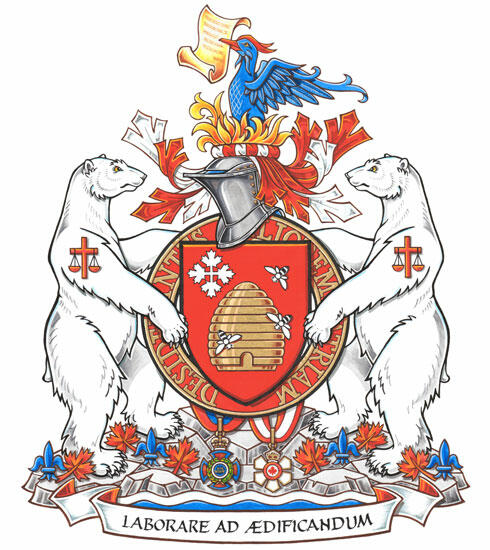 |
Rt. Hon. Jean Chrétien, Term: Nov 1993 - Dec 2003 Jean Chrétien born January 11, 1934, is a Canadian politician who was the twentieth Prime Minister of Canada from November 4, 1993 to December 12, 2003, and leader of the Liberal Party of Canada from 1990 to 2003. Jean Chrétien born January 11, 1934, is a Canadian politician who was the twentieth Prime Minister of Canada from November 4, 1993 to December 12, 2003, and leader of the Liberal Party of Canada from 1990 to 2003.Chrétien turned most of his attention to clearing away the massive debt he had inherited from the Trudeau and Mulroney eras. He was assisted by Martin. The government began a program of deep cuts to provincial transfers and other areas of government finance. During his tenure as Prime Minister, a $42 billion deficit was eliminated, five consecutive budget surpluses were recorded, $36 billion in debt was paid down, and taxes were cut by $100 billion (cumulatively) over 5 years. |
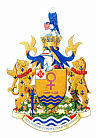 |
Rt. Hon. Kim Campbell, Term: Jun 1993 - Oct 1993 In 1993, Defence Minister Campbell was the front-runner for the Conservative leadership following Brian Mulroney's resignation. She campaigned on the "politics of inclusion," new-style politics intended to appeal to a party and country soured with politicians. In 1993, Defence Minister Campbell was the front-runner for the Conservative leadership following Brian Mulroney's resignation. She campaigned on the "politics of inclusion," new-style politics intended to appeal to a party and country soured with politicians.In a surprisingly close leadership race, Campbell outlasted Jean Charest to take office as Canada's first female prime minister on June 25, 1993. Her first act was to reduce the size of Cabinet. |
 |
Rt. Hon. Brian Mulroney, Term: 1984 - 1993 In 1983 Joe Clark tried to quell party discontent by reopening the leadership. This time Mulroney beat him. In the federal election of 1984, he had the chance to test his favourite political theory -- that the Tories must win Québec in order to win the country. Mulroney promised to bring Québec into the constitution "with honour and enthusiasm." On economic issues he called for less government intervention and stronger ties with the US. In 1983 Joe Clark tried to quell party discontent by reopening the leadership. This time Mulroney beat him. In the federal election of 1984, he had the chance to test his favourite political theory -- that the Tories must win Québec in order to win the country. Mulroney promised to bring Québec into the constitution "with honour and enthusiasm." On economic issues he called for less government intervention and stronger ties with the US.Running against a Liberal Party burdened by the dislike of Trudeau and John Turner, Mulroney won 211 seats, 58 in Québec. It was the largest majority in Canadian history. |
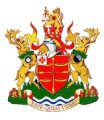 |
Rt. Hon. John Turner, Term: Jun 1984 - Sep 1984 A successful lawyer, Turner entered politics in 1962 at Lester Pearson's request. In 1968 he ran for the leadership of the Liberal Party as an "anti-establishment" candidate but was defeated by Pierre Trudeau. He joined Trudeau's Cabinet, serving as Justice Minister, and Finance Minister. A successful lawyer, Turner entered politics in 1962 at Lester Pearson's request. In 1968 he ran for the leadership of the Liberal Party as an "anti-establishment" candidate but was defeated by Pierre Trudeau. He joined Trudeau's Cabinet, serving as Justice Minister, and Finance Minister.Increasingly, Turner came into conflict with Trudeau over economic policy, and in a surprise move in September 1975, he resigned from Cabinet altogether. Turner stayed out of politics until Trudeau's retirement in 1984. Turner entered the leadership race, defeating Jean Chrétien to become prime minister. He was regarded as the "golden boy," promising a new business-like approach to politics and the Liberal party. |
 |
Rt. Hon. Pierre E. Trudeau, Term: 1968 - 1979, 1980 - 1984 From the Official Languages Act in 1969, to the October Crisis in 1970, the 1980 referendum and the patriation of the Constitution in 1982, Trudeau dominated Canada's political landscape like few others. From the Official Languages Act in 1969, to the October Crisis in 1970, the 1980 referendum and the patriation of the Constitution in 1982, Trudeau dominated Canada's political landscape like few others. Pierre Trudeau Biographies - Pierre Trudeau was first elected Canada's prime minister in 1968. He remained in power over the following 16 years until 1979. Leading Canada again from 1980 to 1984, the influence of Trudeau's policies and actions is still strong and very evident in Canadian politics today. Pierre Trudeau's status as a political giant in Canadian history is indisputable. |
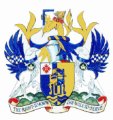 |
Rt. Hon. Joseph Clark, Term: 1979 - 1980 At the age of 39, Joe Clark became the youngest Prime Minister of Canada in 1979. A fiscal conservative, Joe Clark and his minority government were defeated after just nine months in power on a non-confidence motion on a budget of tax increases and program cuts. At the age of 39, Joe Clark became the youngest Prime Minister of Canada in 1979. A fiscal conservative, Joe Clark and his minority government were defeated after just nine months in power on a non-confidence motion on a budget of tax increases and program cuts.Clark was the first Progressive Conservative to head Canada's federal government since the defeat of John Diefenbaker's Progressive Conservative government in the 1963 election. With a minority government in the House of Commons, Clark had to rely on the support of the Social Credit Party, with its six seats, or the New Democratic Party (NDP), with its 26 seats. At the time, Opposition leader Trudeau said that he would allow the Progressive Conservatives a chance to govern, though he warned the Prime Minister against dismantling Petro-Canada, which was unpopular in Clark's home province of Alberta. |
Rt. Hon. Lester B. Pearson, Term: 1963 - 1968 Lester B. Pearson was a Canadian statesman, diplomat and politician who won the Nobel Peace Prize in 1957. He was also the fourteenth Prime Minister of Canada from April 22, 1963, until April 20, 1968, as the head of two back-to-back minority governments following elections in 1963 and 1965. Lester B. Pearson was a Canadian statesman, diplomat and politician who won the Nobel Peace Prize in 1957. He was also the fourteenth Prime Minister of Canada from April 22, 1963, until April 20, 1968, as the head of two back-to-back minority governments following elections in 1963 and 1965.During his time as Prime Minister, Pearson's minority government introduced universal health care, student loans, the Canada Pension Plan, the Order of Canada, and the current Canadian flag. During his tenure, Prime Minister Pearson also convened the Royal Commission on Bilingualism and Biculturalism. With these accomplishments, together with his groundbreaking work at the United Nations, and in international diplomacy, Pearson is generally considered among the most influential Canadians of the 20th century. |
|
 |
Rt. Hon. Sir John A. Macdonald, Term: 1867 - 1873 Sir John Alexander Macdonald GCB, KCMG, PC, PC (Can), (January 11, 1815 - June 6, 1891) was the first Prime Minister of Canada and the dominant figure of Canadian Confederation. Macdonald's tenure in office spanned 19 years, making him the second longest serving Prime Minister of Canada. Sir John Alexander Macdonald GCB, KCMG, PC, PC (Can), (January 11, 1815 - June 6, 1891) was the first Prime Minister of Canada and the dominant figure of Canadian Confederation. Macdonald's tenure in office spanned 19 years, making him the second longest serving Prime Minister of Canada.He is the only Canadian Prime Minister to win six majority governments. He was the major proponent of a national railway, completed in 1885, linking Canada from the Atlantic to the Pacific Oceans. He won praise for having helped forge a nation of sprawling geographic size, with two diverse European colonial origins, numerous Aboriginal nations, and a multiplicity of cultural backgrounds and political views. Macdonald was a Freemason, initiated in 1844 at St. John's Lodge No. 5 in Kingston. In 1868, he was named by the United Grand Lodge of England as its Grand Representative near the Grand Lodge of Canada (in Ontario) and the rank of Past Grand Senior Warden conferred upon him. He continued to represent the Grand Lodge of England until his death in 1891. Suspended from the arms is the collar of a Knight Grand Cross of the Order of the Bath (civil division). Macdonald was appointed a KCB in 1867 and elevated to a GCB in 1884. |






